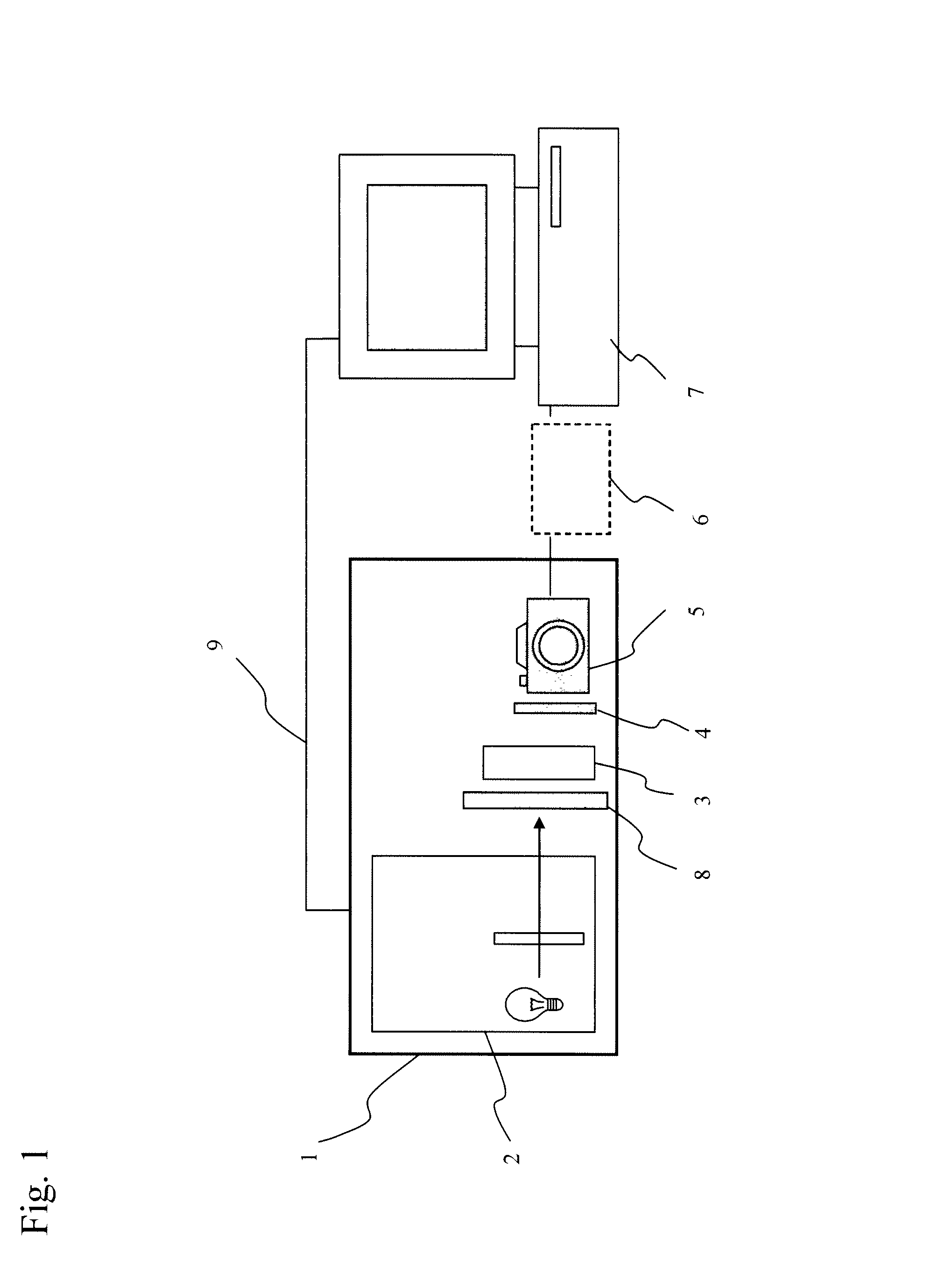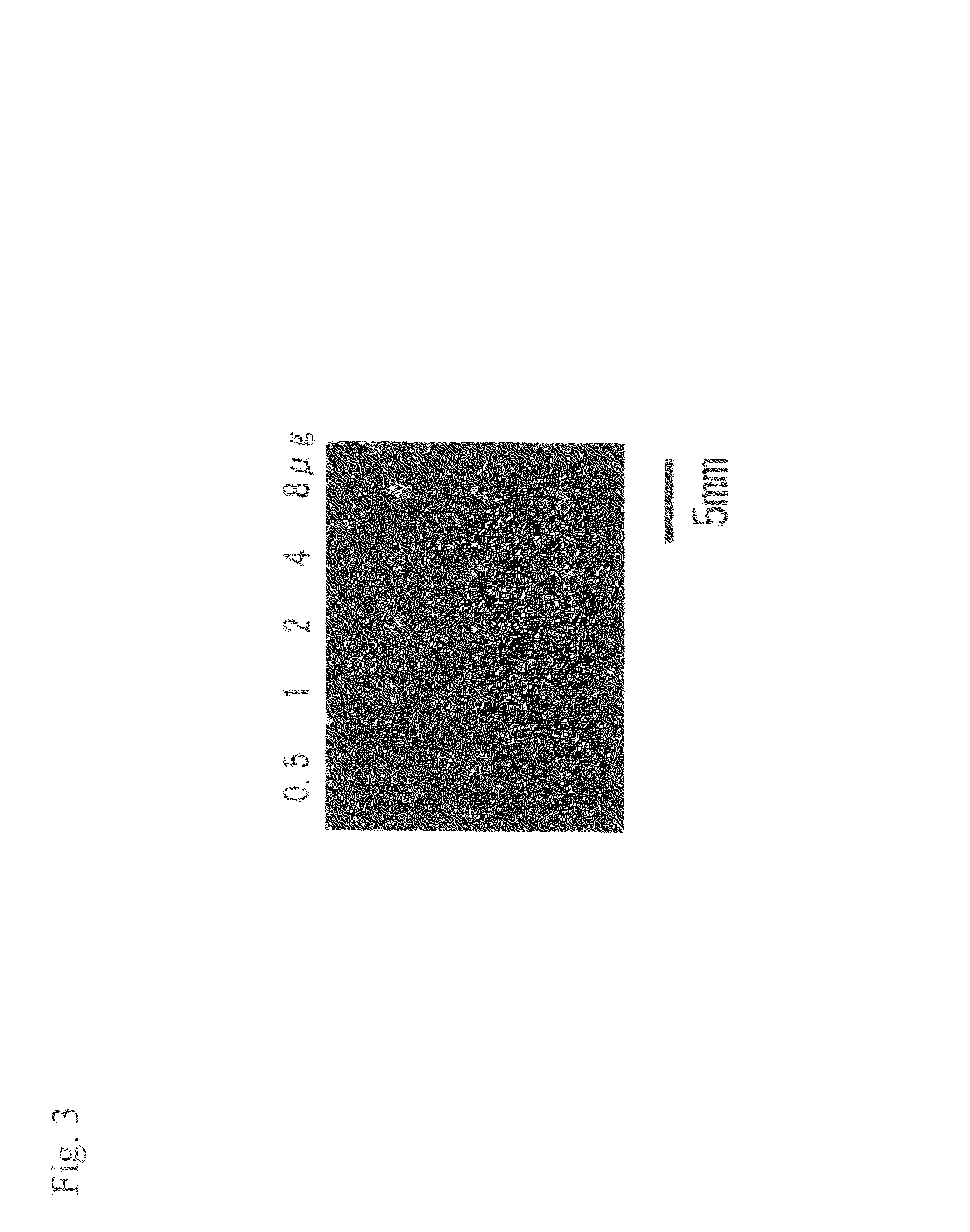Detection and analysis system for protein array
a protein array and analysis system technology, applied in the field of detection and analysis system for protein arrays, can solve the problems of inability to readily construct a system using such a photodetector, and the cost of two-dimensional photodetectors which can detect ultraviolet light is extremely high, so as to achieve the effect of inexpensive and readily available, inexpensive and readily availabl
- Summary
- Abstract
- Description
- Claims
- Application Information
AI Technical Summary
Benefits of technology
Problems solved by technology
Method used
Image
Examples
examples
[0077]The present invention will be specifically described with reference to the following examples, but the present invention is not limited by these examples.
[0078]In this example, a base material for a protein array was prepared by forming a thin sheet of a polyacrylamide gel containing a polymer having an amino group on a surface of quartz glass. Since this base material substantially did not absorb light in the wavelength range of visible light and ultraviolet light (transparent), the optical activity of a protein present in the gel was able to be directly detected. In other words, an immobilized protein and a protein which interacted with the immobilized protein were able to be detected / analyzed by an optical method, without a specific labeling process.
[0079]In this example, a green fluorescent protein (SEQ ID No:1) and dihydrofolate reductase (SEQ ID NO:4) were immobilized on this base material for a protein array. Since the green fluorescent protein was green under natural l...
PUM
| Property | Measurement | Unit |
|---|---|---|
| wavelength | aaaaa | aaaaa |
| wavelength | aaaaa | aaaaa |
| wavelength | aaaaa | aaaaa |
Abstract
Description
Claims
Application Information
 Login to View More
Login to View More - R&D
- Intellectual Property
- Life Sciences
- Materials
- Tech Scout
- Unparalleled Data Quality
- Higher Quality Content
- 60% Fewer Hallucinations
Browse by: Latest US Patents, China's latest patents, Technical Efficacy Thesaurus, Application Domain, Technology Topic, Popular Technical Reports.
© 2025 PatSnap. All rights reserved.Legal|Privacy policy|Modern Slavery Act Transparency Statement|Sitemap|About US| Contact US: help@patsnap.com



